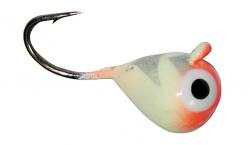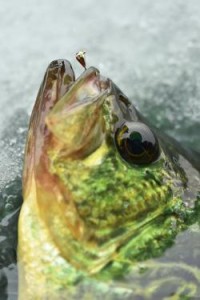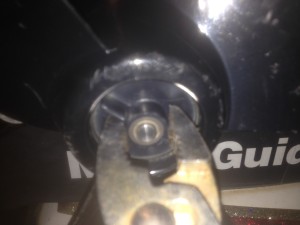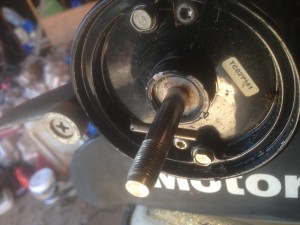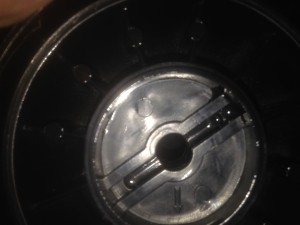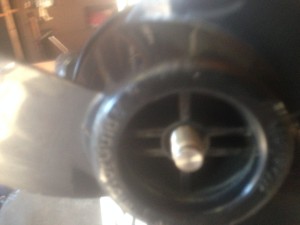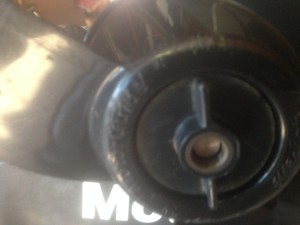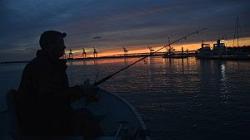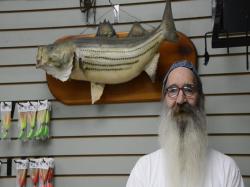Positive Outlook For Outdoor Recreation In 2016
from The Fishing Wire
Editor’s Note: According to this report from the American Recreation Coalition, 2016 looks like it will be a good year for the outdoor industry.
Washington – Outdoor recreation leaders report good sales and activities for 2015 and expectations of still stronger activity in 2016, according to a new report from the American Recreation Coalition, Outdoor Recreation Outlook 2016. Americans spend more than $650 billion annually on equipment ranging from skis and tents to RVs and boats and on services ranging from fishing licenses to zip lines, supporting millions of jobs in manufacturing, sales and service. And renewed interest in outreach and promotion by federal land and water management agencies – based around the National Park Service’s Centennial Celebration – is creating new opportunities for Americans everywhere to enjoy their great outdoors.
A core strength of outdoor recreation in America is the lure of America’s public lands and waters covering nearly one third of the nation’s surface. Best known is America’s National Park System with 408 units, ranging from world-renowned destinations to small historic sites. Visitation is on the rise, up to 3.66% from 2014 levels, with 8.7 million more visits for the year to date. Key to this rise is the National Park Service’s first major promotional campaign in 50 years – Find Your Park – as well as the Every Kid in a Parkinitiative, aimed at providing four million fourth graders and their guests an experience on public lands and waters throughout the school year.
Collectively, America’s State Parks hosted more than 740 million visitors in 2014, an increase of more than 12 million from the preceding year. State park visitation trends continue at record levels. State parks now report an inventory of more than 217,000 campsites, of which about one-third are seasonal. Of the nearly 60 million overnight visitors to state parks in the past year, over 50.3 million were campers.
Vehicle sales remain strong. According to the Recreation Vehicle Industry Association (RVIA), the market for RVs has maintained its strength and sales of new units in 2015 will rise to more than 370,000 units. This will mark a sixth consecutive yearly increase. Looking further out, forecasts for 2016 RV sales remain favorable with total shipments expected to surpass this year’s estimate to finish at more than 380,000 units.
Recreational use of on- and off-highway motorcycles, ATVs, and ROVs is also growing. The industry contributes nearly $109 billion in direct spending to the U.S. economy annually and over 1.5 million jobs. Nearly 30 million Americans ride motorcycles on and off roads, and ATV ridership is some 35 million annually.
KOA – the nation’s largest private campground system – reports a very strong year across the board, with both occupancy and registration revenue showing increases.
ACTIVE Network, the organization that manages recreation.gov – the unified means for making reservations on all federal lands – reports that reservations increased 19% – to 4.4 million in 2015, up from 3.7 million in 2014. Recreation.gov recorded more than 22 million visits, an increase of 31.25%, and a 28.15% increase in users, with nearly 12 million in 2015. Use fees also increased 12% over 2014 levels. Federal reservable facilities increased from 3,079 to 3,205 over the same period.
Fishing remains one of the most popular lures to the great outdoors. According to the 2015 Special Report on Fishing released by the Recreational Boating & Fishing Foundation (RBFF) and the Outdoor Foundation, the sport continues to grow, with 2.4 million newcomers who tried fishing in 2014 alone. Forty-six million Americans – 15.8% of the U.S. population ages six and older – participated in fishing last year and those numbers are expected to keep growing with RBFF’s new “60 in 60” initiative, which aims to achieve 60 million anglers ages 6 and older by 2021.
New boat sales continue to steadily recover but still remain below pre-recession highs. With an estimated 6% growth expected in 2015 and another potential 6% growth in 2016, the industry would be poised to return to near pre-recession levels of 250,000 new boats sold, including power, sail and personal watercraft. Ski boats, outboard boats, jet drive boats and personal watercraft are showing the strongest gains in 2015.
Marinas continue to build momentum post-recession. The push to improve comes from the call from boaters for marinas to be resort and destination locations instead of just places to store and repair boats. Boaters want pools, clubhouses, nearby restaurants and activities, as well as clean, comfortable accommodations for weekend visits. More marinas than ever are offering boat rentals, water toy rentals, event services and cabin, campground and RV park services.
The U.S. bike industry is enjoying another solid, steady year of sales. Total U.S. retail dollars generated by retail sales of bicycles, accessories, and related equipment are expected to exceed $7 billion this year – a figure that includes sales of used bikes. Unit sales are expected to total about 18 million. According to a study commissioned by PeopleForBikes, 103 million Americans rode a bike at least once in 2014. Bike riding in large U.S. cities has doubled in the last 15 years. Safer bike infrastructure and the onset of bike-sharing systems (in at least 70 U.S. cities) are key factors in this growth, a trend that is expected to continue.
According to the America Outdoors Association, revenues for whitewater rafting, kayaking and paddlesports are up significantly over 2014, with lower gas prices fueling family travel. Most outdoor recreation activities and cabin rentals saw higher demand. Revenues for aerial adventures (zip lines and aerial adventure parks) have flattened out as the number of parks have proliferated.
The International Snowmobile Manufacturers Association (ISMA) is very optimistic about the 2015-16 season. Snowmobile sales in the U.S. and Canada for 2015 increased 6% compared to 2014. And the sales of manufacturer-branded parts, clothing and accessories increased 5% from last year. The number of miles ridden increased 9% over last year.
U.S. ski areas tallied an estimated 53.6 million skier and snowboarder visits during the 2014-15 season – down 5% from the previous season’s 56.5 million total, and down 3.8% from the five-year industry average of 55.7 million skier visits according to the National Ski Areas Association (NSAA). Despite a stronger economy, weather challenges across all regions of the country contributed to this drop in skier visits. Nationally, snowfall was 28% below average this season.
NSAA’s survey results also contained some particularly positive news. For example, the results from the critical Rocky Mountain region were well above the region’s five-year average. NSAA’s survey results also showed strong growth in season pass sales, which were up 6.2% from the previous season – an important indicator in the public’s demand for skiing and snowboarding.
Snow sports market sales topped $4.5 billion for the 2014-15 season, up 2% compared to the 2013-14 season. Overall, categories including outerwear, snow boots, headwear and more sold very well this season, but equipment and many equipment accessories like goggles and helmet sales dropped compared to 2013-14.
Recreational activities continue to be a mainstay of the American lifestyle, and there is widespread optimism regarding 2016. ARC’s report is available for download as a PDF at http://www.funoutdoors.com/files/Outdoor%20Recreation%20Trends%202016.pdf.

